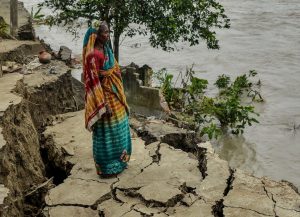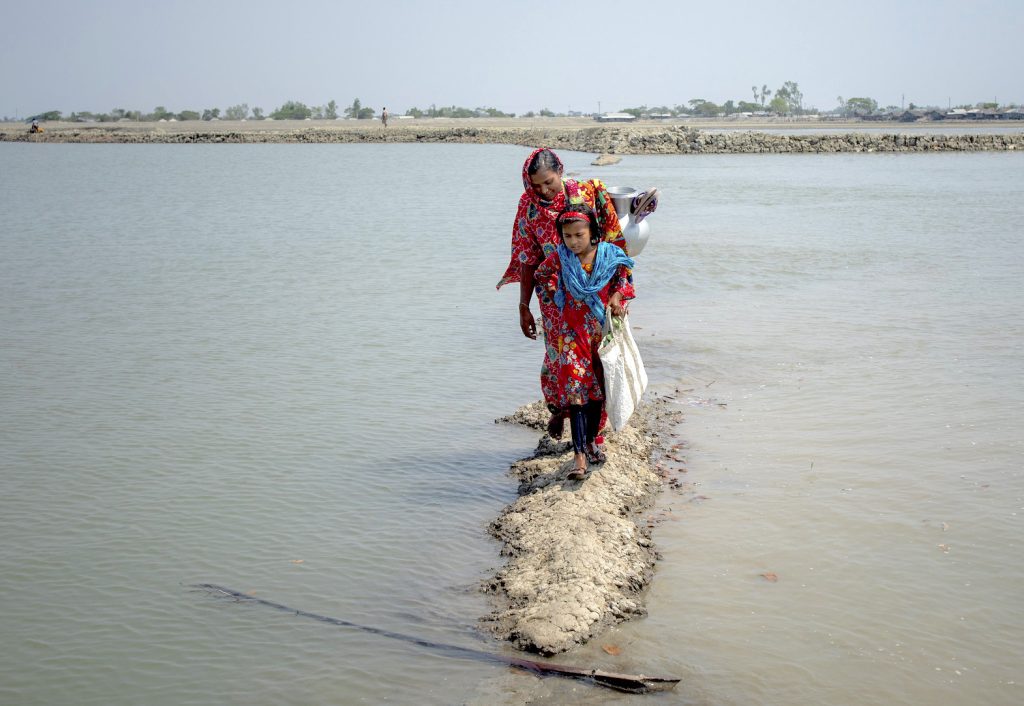Climate change is already fuelling global migration patterns
Date: 15 August 2023
GCI Blog Post: Climate change is not just an environmental issue, but also a social and political one that affects millions of people around the world. One of the most significant impacts of climate change is the displacement of people due to environmental disasters, such as droughts, floods, and hurricanes.
The impact of climate change on global migration patterns is already being felt in many parts of the world. In Africa, for example, droughts and floods have caused crop failures, leading to food shortages and economic hardship. This has forced many people to migrate to cities or to other countries in search of work and a better life. In the Pacific, rising sea levels are already forcing some island communities to consider relocating to higher ground.
In addition to environmental disasters, climate change is also affecting migration patterns in more subtle ways. For example, as temperatures rise, people are moving to cooler regions where they can better withstand the heat. This has led to an increase in migration from rural to urban areas, as well as migration between countries and continents. The impact of climate change on migration patterns is not just limited to developing countries. In the United States, for example, wildfires and hurricanes have destroyed homes and communities, forcing many people to relocate.
Similarly, in Europe, the influx of refugees from Syria and other countries has been linked to climate change, as prolonged droughts and food shortages were contributing factors to the conflict.Despite the growing evidence of the impact of climate change on migration patterns, there is still a lack of awareness and action on the issue. Governments around the world must take a more proactive approach to address the root causes of climate change and its impact on people. This includes investing in sustainable infrastructure, promoting renewable energy sources, and creating policies that support the most vulnerable communities.
Bangladesh is one of the most vulnerable countries in the world to the effects of climate change, due to its low-lying geography and high population density. The country is prone to natural disasters such as floods, cyclones, and droughts, which have become more frequent and severe in recent years due to climate change. As a result, Bangladesh has been experiencing significant migration both internally and externally. According to a recent report by the Internal Displacement Monitoring Centre (IDMC), more than 5 million people were displaced by natural disasters in Bangladesh in 2020 alone. This has resulted in an increasing number of climate refugees, with many people moving from rural areas to cities or to other countries in search of livelihood opportunities and a better quality of life.
One of the most pressing issues facing Bangladesh is the impact of sea-level rise. With most of the country situated just a few meters above sea level, a rise in sea level due to climate change would have devastating consequences for millions of people. This would result in increased flooding, salinization of agricultural land, and loss of coastal habitats, leading to the displacement of millions of people. In addition to sea-level rise, Bangladesh is also vulnerable to extreme weather events such as cyclones and floods. These events often result in the loss of homes, crops, and livelihoods, forcing people to migrate to other areas in search of safety and security.
The impact of climate change on migration patterns in Bangladesh is also gendered. Women and girls are often disproportionately affected by natural disasters and are more likely to be forced to migrate as a result. This is due to a number of factors, including gender-based discrimination, limited access to resources and education, and the responsibility of caring for children and elderly relatives. The Bangladesh government has taken some steps to address the impact of climate change on migration patterns.
For example, the government has developed a National Plan for Disaster Management and has established a Climate Change Trust Fund to support climate change adaptation and mitigation efforts. However, more needs to be done to ensure that vulnerable communities are protected and supported. As Bangladesh is an agricultural country, the changing climate has significant impacts on the agricultural sector. Climate change-induced droughts, floods, and other extreme weather events are affecting crop yields and food security in the country. This has led to increased poverty and hunger, forcing many people to migrate in search of livelihood opportunities.
So, now is the perfect time for individuals to play in addressing the impact of climate change on migration patterns. This includes reducing our carbon footprint, supporting climate action groups, and advocating for policies that address the root causes of climate change. The impact of climate change on global migration patterns is a complex and urgent issue that requires immediate action. We must work together as a global community to reduce our greenhouse gas emissions and support the most vulnerable communities affected by climate change. Failure to act now will have far-reaching consequences for generations to come.
Also, the impact of climate change on migration patterns in Bangladesh is a critical issue that requires urgent attention. The country is at risk of being one of the worst affected by climate change, with millions of people facing displacement and other challenges. It is essential that the international community works together to support Bangladesh and other vulnerable countries in addressing the root causes of climate change and protecting the most vulnerable populations.




